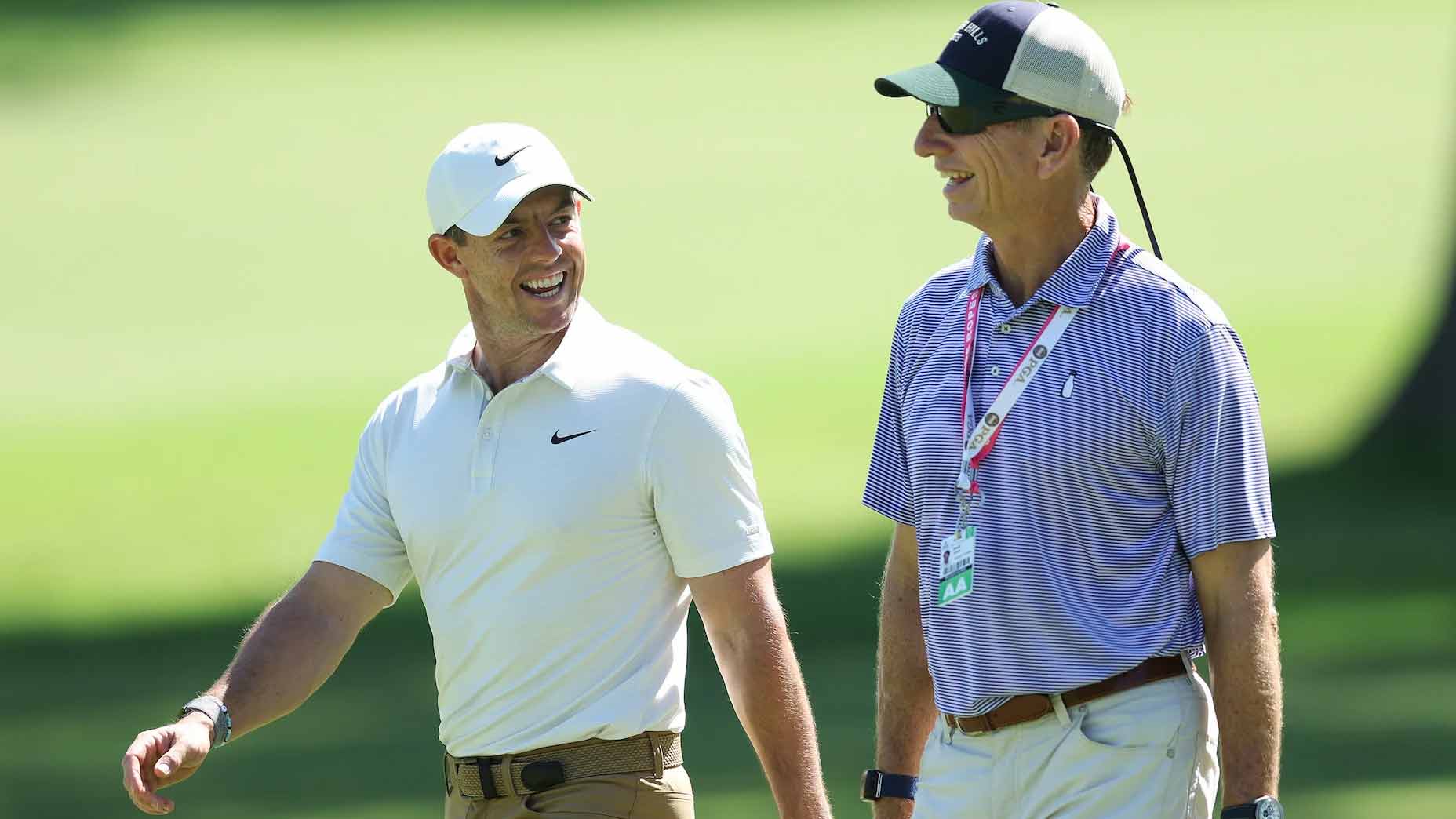How one of golf’s greatest putters helped Rory McIlroy find his feel

"He's just sort of simplified the whole thing and put a lot more feel into it, the way I play the rest of the game."
Getty Images
BROOKLINE, Mass. — It was his first putt of the tournament, and his ball had no chance of going into the hole.
Rory McIlroy’s first two shots on the 500-yard 10th hole had left the 2011 U.S. Open champ safely in the middle of the green, but one poor putt was now putting it in jeopardy. Rolling across the hill, Rory’s ball took more of the break than he thought. Now, it was was rolling too low and with too little speed. But as it did, Rory held his follow through. Calm and focused, his eyes locked on the ball as it slipped further away.
“That’s something we’ve talked about a lot,” says Brad Faxon, who over the course of his career won eight PGA Tour events, and competed in 18 U.S. Opens. “On long putts, watching the ball particularly closely rolls until it completely stops. You’ll notice how much it breaks at the end.”
A few moments later, Rory had something more enjoyable to look at: His ball rolling into the center of the cup from just over three feet.
Rory McIlroy captures the conversation whenever he’s playing well. He lifted the trophy in Canada last week, and he’s the overwhelming favorite to do so again in Boston this week. If he does, there’ll be plenty of talk about his booming drives, rifling iron shots, and swashbuckling golf swing. But perhaps we should pay more attention to his putting.
For a player who spent the three years between 2015 and 2018 ranked between 159th and 97th in SG: Putting, he comes into Brookline this week ranked 31st in the category. In many ways it’s been the engine of his recent ambitions. During his three-under first-round 67 at this week’s U.S. Open, his flatstick helped him gain 4.25 shots on the rest of the field — making it the statistically strongest part of his game during his opening round.
Back to basics
It all started with a phone call to Faxon, one of the best putters of his or any generation, in 2018. Struggling on the greens, he spent an entire Monday afternoon at the Bears Club in Jupiter with Faxon, and had his best putting week of his season later that week. Faxon’s been Rory’s go-to putting guy ever since.
“When I met him I thought, ‘let’s get him back to basics,'” Faxon says. “My goal was to get him freed-up and confident in his stroke. It doesn’t have to be perfect.”
That’s a common theme whenever the pair talk about how they turned around Rory’s performances on the green. They don’t forgo technical work altogether; Rory says he’ll use a mirror about once a week to make sure his eyes are level and don’t angle out to the right, as they tend to do, and that he works on keeping his right elbow into his side at setup (when it doesn’t he tends cut across his putts). It’s all very light touch, by design.
“I think there’s an overabundance of putting training aids, in the sense that players will tend to have an overeliance on those,” Faxon says. “When in reality, 90 percent of what you’re doing with putting happens before you hit the putt.”
Making practice fun
Green-reading, visualization, speed control, pre-shot routines; those took the priority. Improving those doesn’t mean drills, but something more akin to games. One of their go-tos is practicing hitting the same putt different speeds: Soft and hard, so it enters the hole at different areas.
“It opens a person’s creativity,” Faxon says of the drill. “It helps your visualization and makes putting more artful.”
Whatever it does, Rory enjoys it.
“It’s become almost less like practice,” adds McIlroy. “He’s just sort of simplified the whole thing and put a lot more feel into it, the way I play the rest of the game.”
Rory and Faxon talk a lot, too. About the process. About keeping things big picture. About accepting that not every putt is going to go in — and how that’s ok. Rory didn’t have to worry about that much on Thursday. After that short par-saver on the first, the World No. 3 spent the rest of his first round holing a number of impressive putts: Long birdie looks on the 7th and 8th holes, along with a 12-foot par saver after bunker trouble on the 5th.
“Putts like those are huge for momentum,” Rory said after his round. “Walking up to those greens, I was accepting that I was just trying to give myself a putt of 10 or 15 feet, knowing I had a chance to make them.”
It’s the kind of artsy, conceptual stuff that Rory uses to paint a picture off the tee. That’s helped him find his flow on the greens.
Faxon, for his part, loves to see it. Not as a his coach, but rather, as his peer. There was perhaps no golfer greater than Faxon at wielding his putter as a paintbrush. And he appreciates good art when he sees it.
“It was beautiful to watch. He just looked so comfortable over the ball, so instinctive and reactive,” he says of Rory. “People see that confidence in Rory over his full shots. I want them to feel the same about Rory’s putting as they do his driving.”
Time will tell, but if Thursday at Brookline was any indication, it could be his work with Rory that proves Faxon’s masterpiece.











